- TECTONIC GROUNDS -
'Onyx' the Interactive Creature
Design Brief
Emphasizing on hands-on exploration of spatial and creative processes of architectural design, Tectonic Grounds explores digital fabrication techniques, physical computing (e.g. Adruino and Firefly) and rapid prototyping (laser-cut and 3D printing) to create a 1:1 scale interactive folly.
The potential of interaction design to create a unique and personalized experience of space is investigated, the role of drawing, making and constructing skills within today’s technology is also challenged, defining contemporary standards of craftsmanship.
Working with a team of 33 students, ‘Onyx’, a static physical structure made from polypropylene pods with interactive components of data receptors, LED lights and Spidron-inspired response mechanism, is designed and erected.
Click the image below to learn more about:
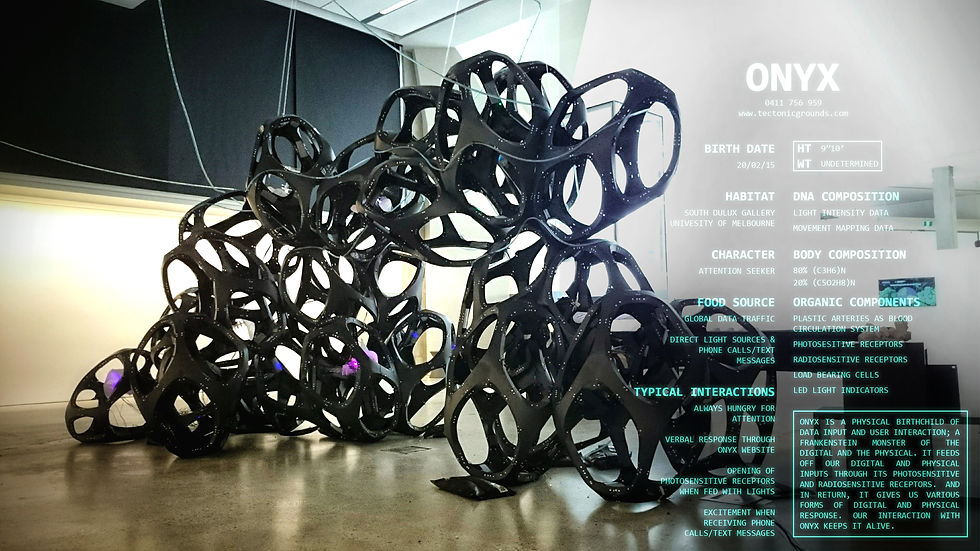



D. The Spidron Panel
Spidron is a continuous flat geometric figure composed entirely of triangles, where, for every pair of joining triangles, each has a leg of the other as one of its legs, and neither has any point inside the interior of the other. If it is drawn on paper, cut out in a single piece, and folded along a number of legs, a Spidron can be easily deformed into a three-dimensional figure.
This deformability makes the development of a great variety of spatial and mobile applications possible, and such developments are suitable for making folding building structures that perform aesthetic and practical functions. The deforming Spidron system, a poetic and repetitive motion, provides an excellent solution for the responsive mechanism in 'Onyx'.
The material used for the panel needs to be resilient and strong to withstand the constant folding, while be light at the same time to be powered by 1 small servo. Different patterns are applied to help a smoother folding, twisting motion and a better reflection of LED light.
E. The Movement Mechanism
Different systems to operate and control the expand-and-contract motion of the panel are experimented. The final solution with a rotary motion follows the geometry the best and is proved to be most efficient and elegant.
A. The Interaction Logic
How Onyx feeds on and responds to different stimulation from visitors.


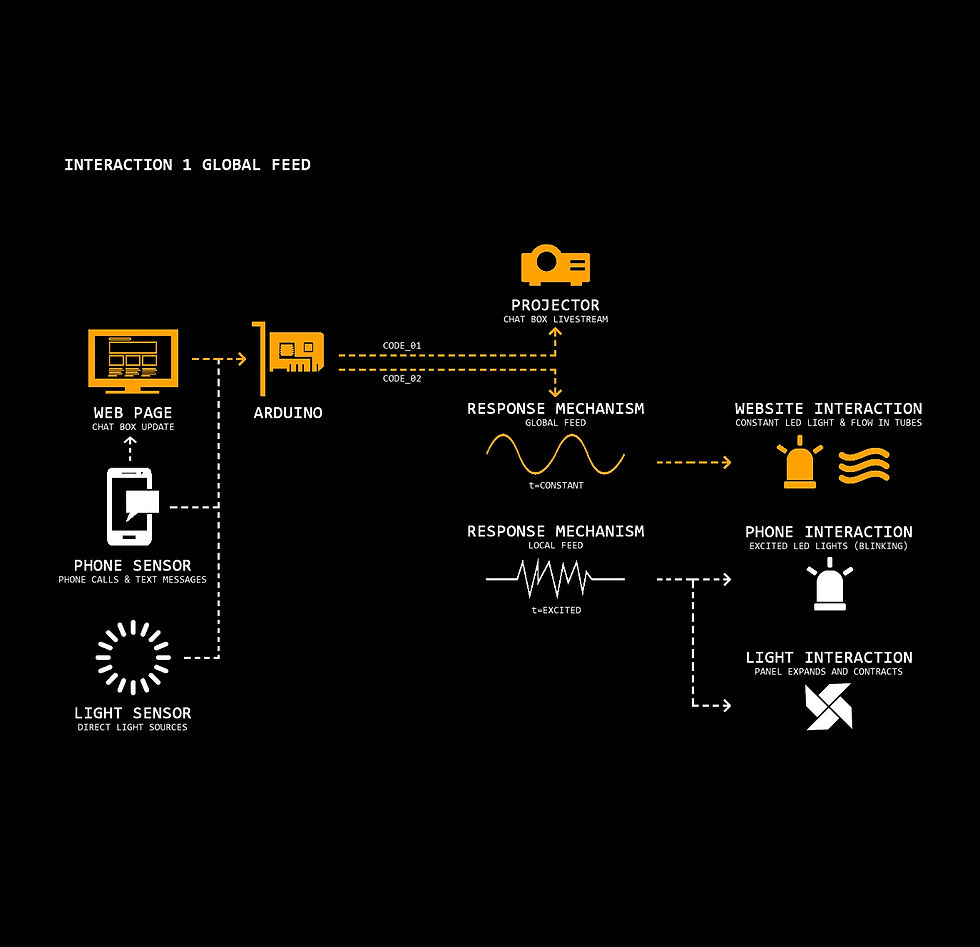
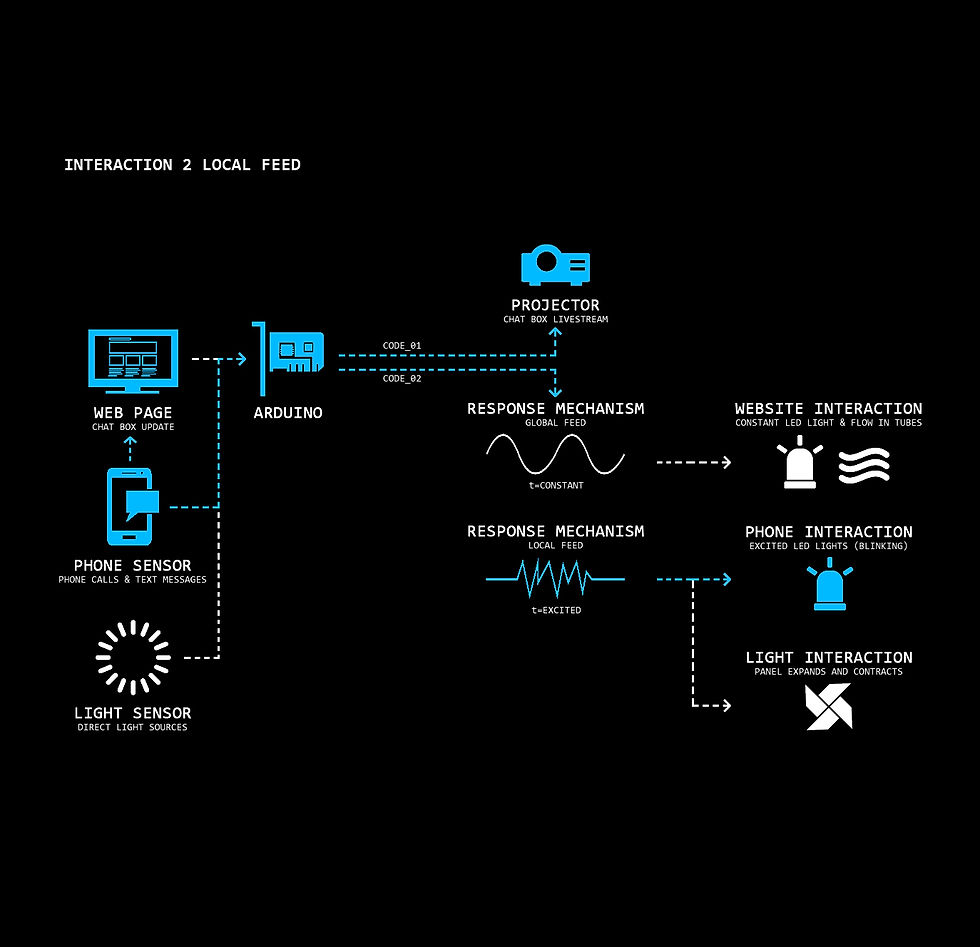




















B. The Form Generation
How light and movement data is translated and combined with response mechanism to create the interactive creature 'Onyx'.
C1. The Modular Structure
The module design takes inspiration from self-supporting structure. The pods are designed to maximize the material properties to allow it to span and take loads.



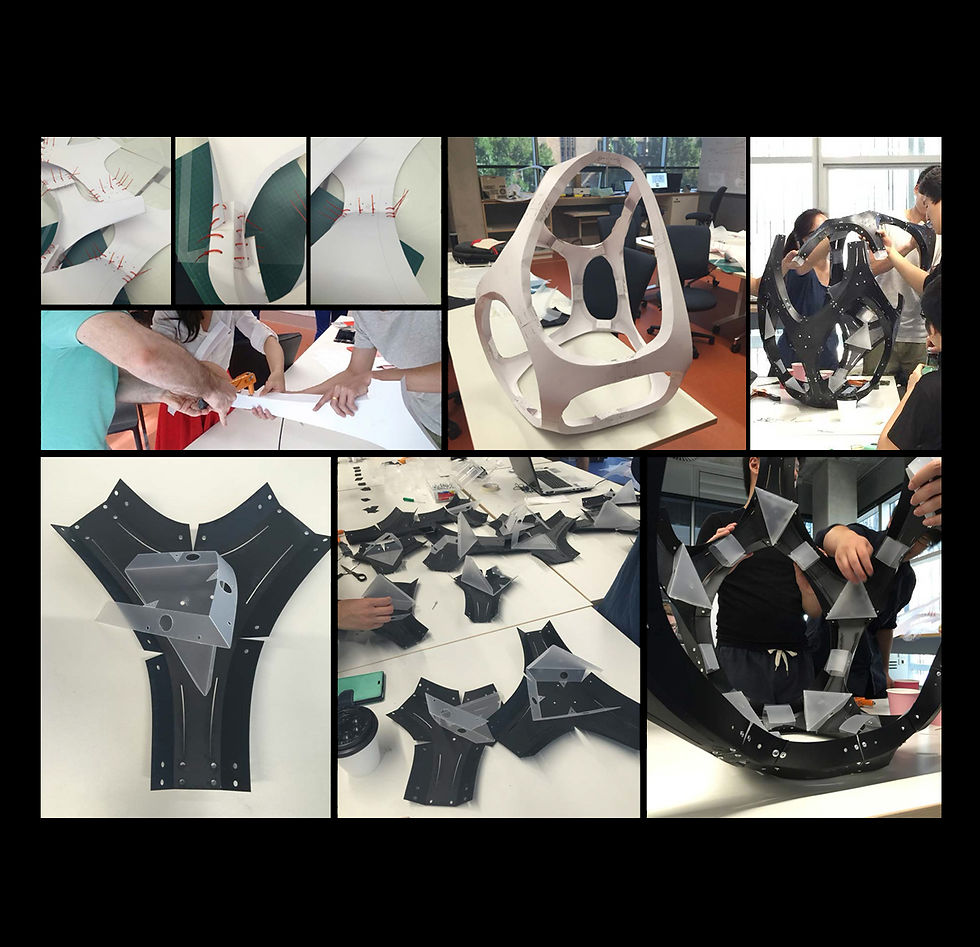







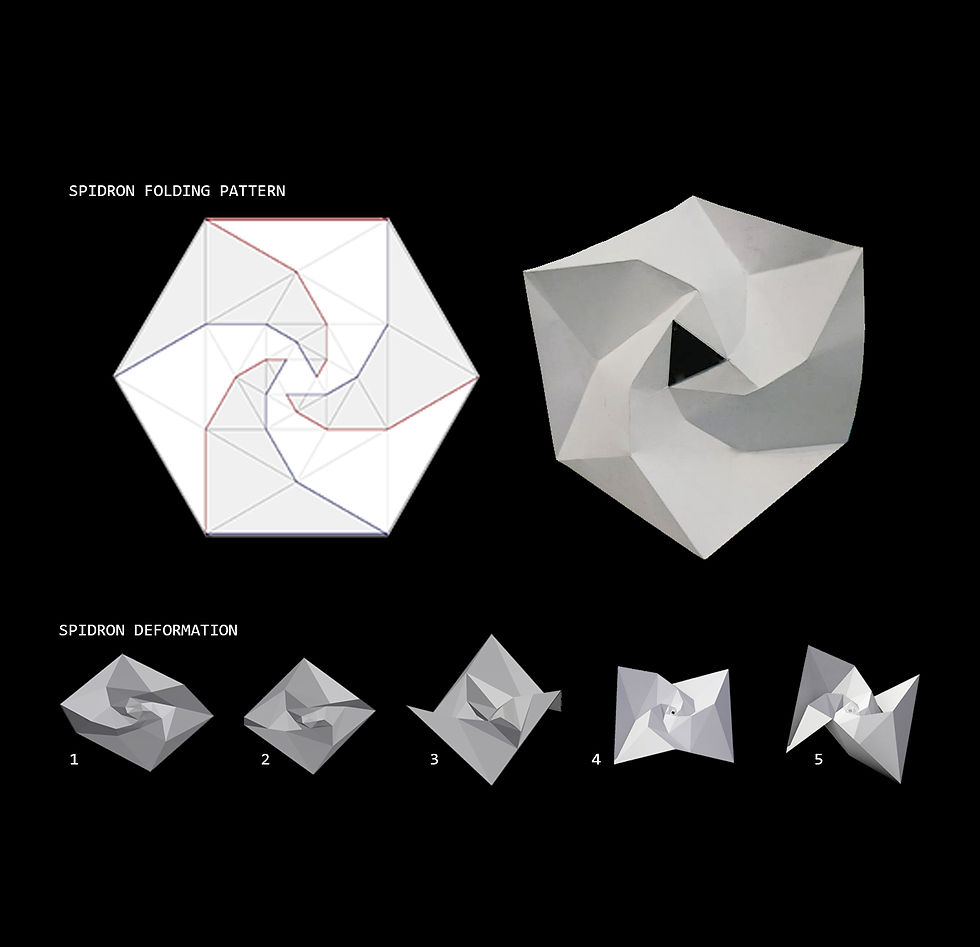




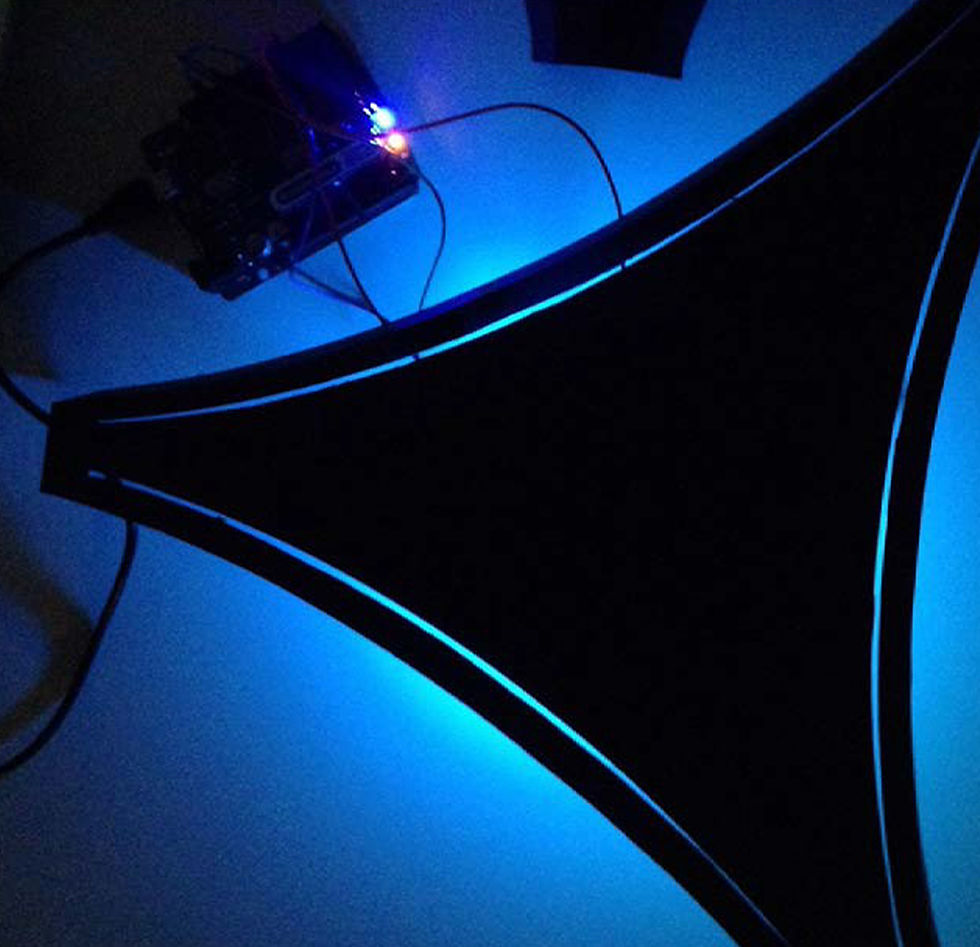

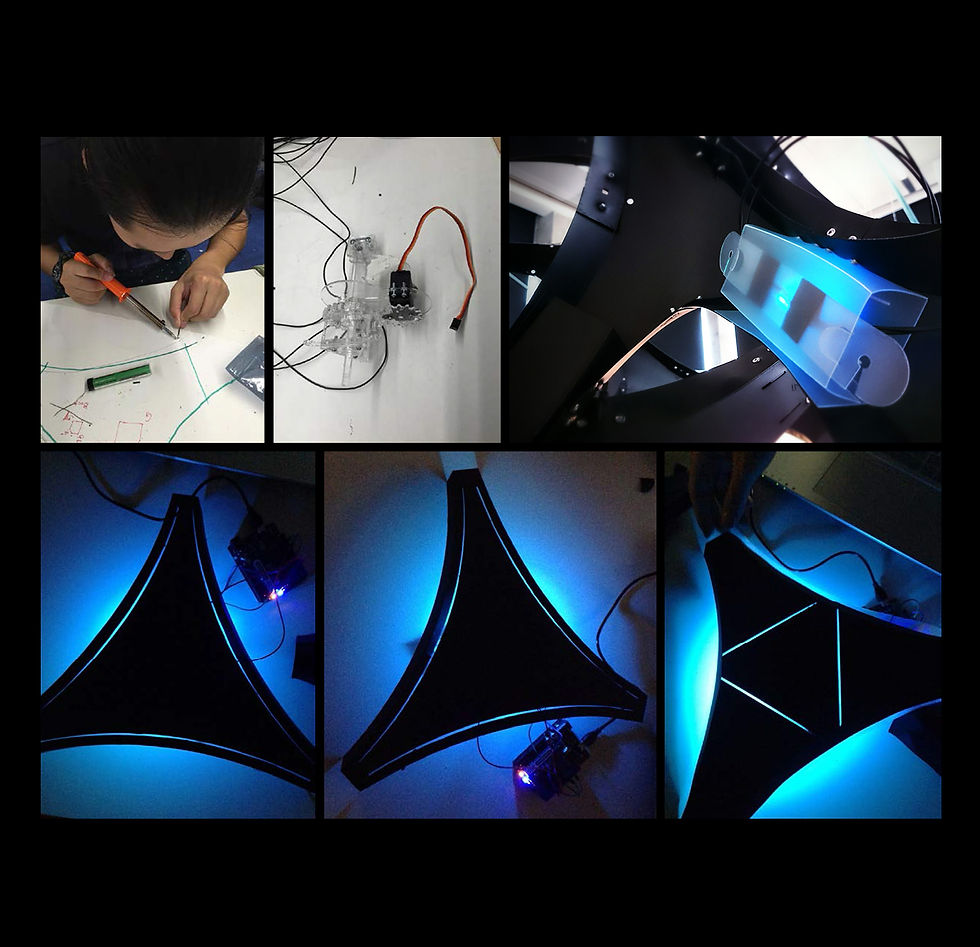



F. The LED Lights
Slits are added to the modules for better aesthetics. The LED lights mounted onto the pods respond to the global feed and while those mounted onto the panels respond to local feed.


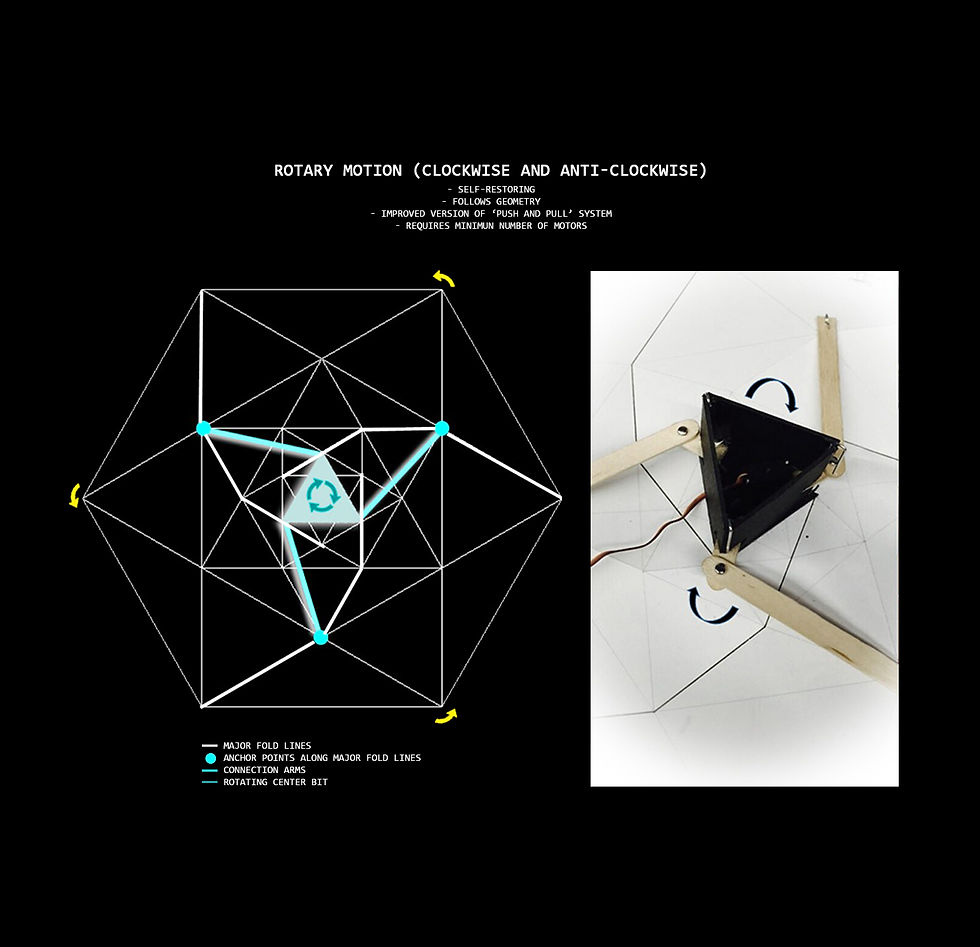















G. The Pulse and Tubes
Liquid flows in the tube represents the constant conversation exchange on the web page online chat box (the global feed).
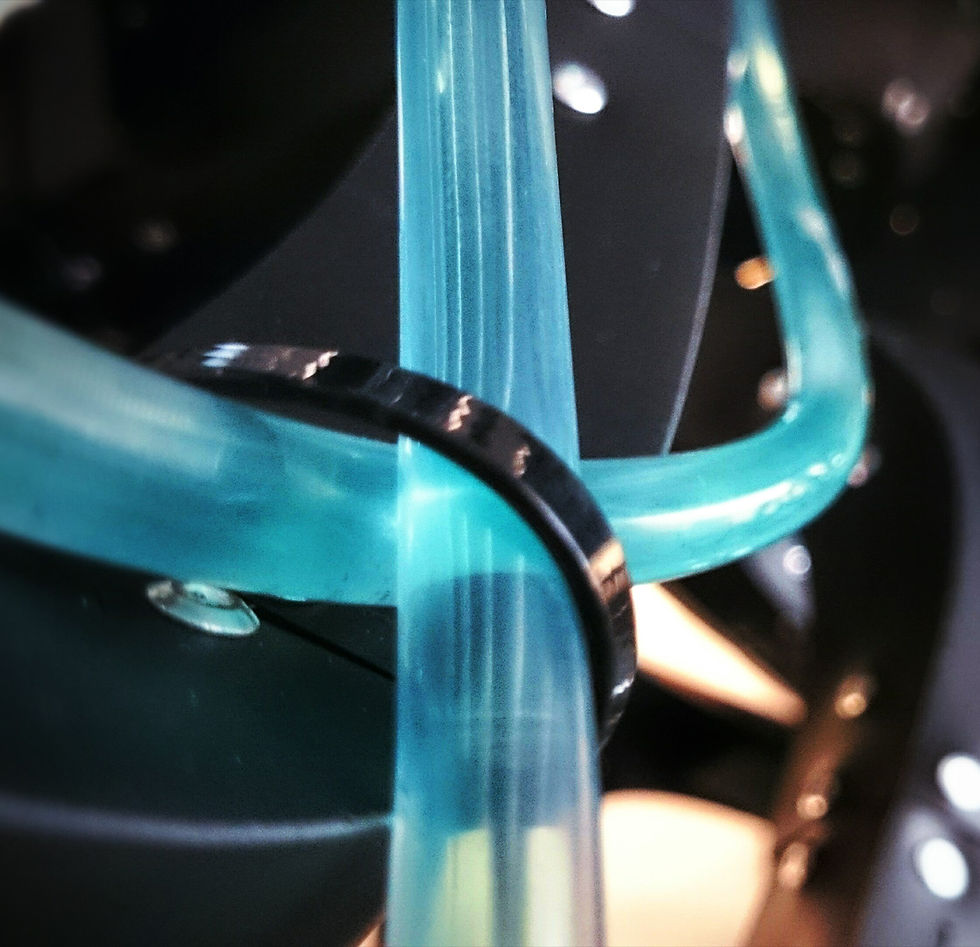



I. Video Footage
a) Exhibition time-Lapse, b) Movement Mechanism Development, c) Installation Time-Lapse
H. Photo Gallery





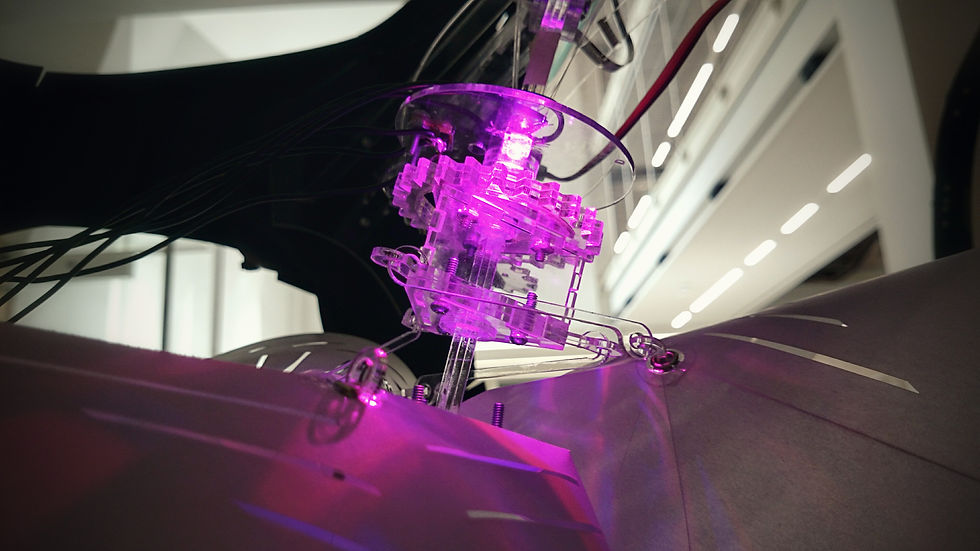



TUTORS
Jannette Le
Mond Qu
Denis Vlieghe
GUESTS AND SUPPORTERS
Grimshaw
Alan Pert
FabLab
MSD Events and Exhibitions Team
STUDENTS
Alexandra Gower
Alexander Wong
Alice Choi
Amanda Loughman
Anju Sharma
Bryan Fan
Calvin Yong
Cheng Chen
Darcy Zelenko
EXTERNAL LINKS
http://www.udmk.net/portfolio/tectonic-grounds-2015/
http://denisvlieghe.com/blog/2015/03/25/tectonic-grounds-2015/
https://msd.unimelb.edu.au/tectonic-grounds
https://issuu.com/udmk/docs/tectonic_grounds_book
Ding Yu
Fabian De Rango
Gunes Erok
Huimin Xu
Jackie Tsang
Jason Toh
Jiawen Zhang
Jilly Raleigh
Jing Wen
Jing Xie
Junhan Foong
Kate Corke
Kay Chen
Nicholas Bergin
Pablo Andrade
Shane Ge
Shaobo Zhu
Tengxiao Liu
Thomas Lo
Vincent Kong
Vitto Andreas
Xiao Wang
Yingjie Xu
Yu Fei Du

